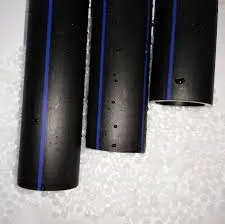Nov . 09, 2024 11:09 Back to list
Understanding HDPE Pipe Fittings for Effective Plumbing and Infrastructure Solutions
Understanding HDPE Pipe Fittings Applications, Benefits, and Installation
High-Density Polyethylene (HDPE) is a popular material for piping systems due to its strength, durability, and flexibility. HDPE pipe fittings play a crucial role in various industries, facilitating the efficient transport of fluids in residential, agricultural, and industrial applications. This article explores the key aspects of HDPE pipe fittings, including their applications, advantages, and installation methods.
Applications of HDPE Pipe Fittings
HDPE pipe fittings are used in a wide range of applications, making them essential components in various settings
1. Water Supply Systems HDPE pipes and fittings are widely used for municipal water supply systems. Their resistance to corrosion and scaling ensures a long lifespan, making them an ideal choice for delivering potable water.
2. Sewage and Wastewater Management HDPE fittings are commonly used in the construction of sewer systems and wastewater management facilities. Their ability to withstand harsh chemicals makes them suitable for these challenging environments.
3. Irrigation Systems In agriculture, HDPE pipe fittings are extensively used for irrigation systems, enabling efficient distribution of water to crops. The flexibility of HDPE allows for easy installation in various terrains.
4. Industrial Applications Many industries rely on HDPE pipes and fittings for transporting chemicals and other fluids. The material's strength and chemical resistance make it a dependable choice for industrial piping.
5. Gas Distribution HDPE is also utilized for gas distribution networks. The lightweight nature of the material simplifies transportation and installation, while its resilience ensures safety.
Benefits of HDPE Pipe Fittings
1. Durability One of the primary advantages of HDPE fittings is their long lifespan. They are resistant to corrosion, rust, and impact, which means they can withstand harsh environmental conditions.
2. Flexibility HDPE is incredibly flexible, allowing for bending and movement without compromising the integrity of the fittings. This flexibility is particularly beneficial in areas prone to seismic activity.
3. Chemical Resistance HDPE fittings can resist a broad range of chemicals, making them suitable for industrial and municipal applications where exposure to corrosive substances is common.
hdpe pipe fitting

4. Lightweight Compared to traditional materials such as metal or concrete, HDPE is significantly lighter. This aspect simplifies handling and installation, leading to reduced labor and transportation costs.
5. Cost-Effectiveness Although the initial costs of HDPE materials may be comparable to other piping options, their longevity and low maintenance requirements often result in lower overall costs over time.
6. Environmentally Friendly HDPE is recyclable, reducing the environmental impact compared to non-recyclable materials. This makes it a more sustainable option for piping.
Installation of HDPE Pipe Fittings
The installation of HDPE pipe fittings requires specific techniques to ensure a reliable and leak-free system. Here are the essential steps involved in the installation process
1. Preparation Start with an assessment of the installation site. The terrain, soil type, and existing structures should be considered to determine the best approach for installation.
2. Cutting and Joining HDPE pipes can be connected using various methods, including butt fusion, electrofusion, and mechanical fittings. Butt fusion involves heating the ends of the pipes and pressing them together to form a strong joint. Electrofusion utilizes special fittings that have built-in heating elements, which melt the surface of the pipes for connection.
3. Testing After installation, it is crucial to perform pressure testing to ensure that the system can handle the required pressure without leaks. This step helps verify that all fittings are installed correctly.
4. Backfilling and Compaction Once testing is complete, backfilling should be done carefully to avoid damaging the pipes. Proper compaction is essential to prevent settling and ensure stability.
5. Maintenance While HDPE systems require minimal maintenance, regular inspections should be conducted to identify and address any issues early.
Conclusion
HDPE pipe fittings are indispensable in modern piping systems, offering advantages in durability, flexibility, and resistance to chemicals. Their wide range of applications makes them suitable for various industries, from municipal water supply to industrial applications. Understanding the benefits and proper installation methods of HDPE fittings can ensure efficient and reliable transportation of fluids in any system. As industries continue to prioritize sustainability and longevity, HDPE pipe fittings will undoubtedly play a critical role in the future of infrastructure development.
-
HDPE Natural Sheet: Durable, Food-Grade & Versatile Plastic Solutions
NewsAug.27,2025
-
Durable Glossy PVC Rigid Sheet | Premium High-Shine Panels
NewsAug.26,2025
-
Durable PP Rigid Sheet: Lightweight, Chemical Resistant Solutions
NewsAug.21,2025
-
PVC Grey Sheet for Extraction: Chemical Resistant & Durable
NewsAug.19,2025
-
Durable PVC Pipe Fittings for Plumbing & Irrigation Needs
NewsAug.18,2025
-
HDPE Steel Belt Reinforced Spiral Corrugated Pipe | High Strength
NewsAug.17,2025

